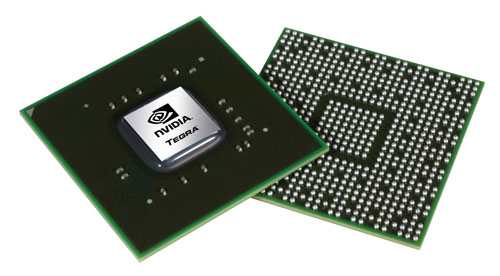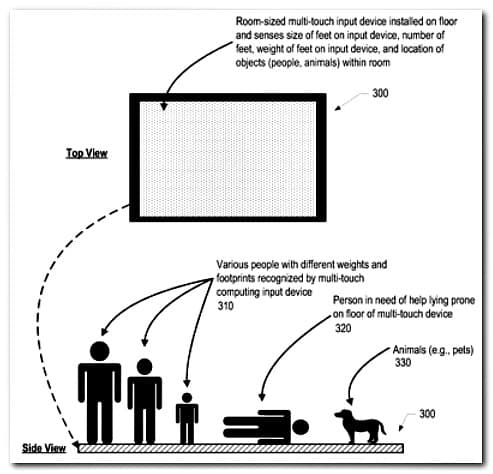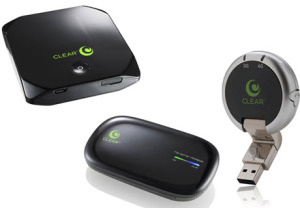Nvidia unveiled its next-generation Tegra mobile system-on-chip processor which it is targeting at the tablet PC and low-cost notebook space. Competing with Intel and AMD, CEO Huang wants to get Nvidia’s chips—which aren’t just for graphics anymore—into tablets and other electronics.
So what’s new in Tegra 2? A faster ARM processor and better graphics and video, while still emphasizing extreme power effeciency.
Nvidia is going head to head with Intel’s Atom chip with its next-generation Tegra SoC (system-on-a-chip) offering, which is aimed at the tablet PC and low-cost notebook space.
Nvidia officials announced the new Tegra offering at the CES show, saying that the processor offers four times the performance of the previous Tegra product and 10 times the speed of chips currently used in smartphones.
The company is aiming the newest Tegra offering at such devices as low-cost notebooks and – in particular – tablet PCs. They’re considered ideal for gaming, video, and Web access. And if Nvidia Chief Executive Jen-Hsun Huang has his way, tablets will also be a showcase for the graphics chips that are his company’s mainstay. “When you look at these things, they’re basically screens,” Huang says of tablets. “We’re really good at making things look good on screens.” So Nvidia designed the latest version of its Tegra chip, introduced at CES on Jan. 7, with tablets in mind.
Tegra 2 upgrades the ARM11 CPUs in the original chip to the ARM Cortex A9. The Cortex A9 is avilable with up to 4 cores, but Tegra 2 ships with a dual-core version. This is a substantial improvement – the Cortex A9 is an out-of-order speculative superscalar processor that offers 2.5 Dhrystone MIPS per core at speeds up to 1GHz. It’s safe to say it’s several times faster than the ARM11 cores in the original Tegra, and a significant step up from even the Cortex A8 found in products like the iPhone 3GS.
As with the first-generation Tegra chips, Tegra 2 features a bunch of individual processing cores on a single chip, each of which can be turned off or scaled back to carefully manage power consumption. There’s an audio processing core, a 2D/3D graphics processor, an HD video decoding processor (capable of smooth 1080p playback), an HD video encoding block, an audio processor, and a still image processor.
Tegra 2 also supports LPDDR2 (low-power DDR2) memory, while Tegra 1 only supports LPDDR1. This will mean a substantial increase in system-wide memory bandwidth.
Video decode and power effeciency are arguably the areas Nvidia is thumping its chest about most. The video decode block of Tegra 2 can smoothly decode 1080p H.264 high profile video at bitrates up to 10 megabits, and the company demoed this capability on a pre-production tablet at CES. This is claimed to be miles ahead of similar SoCs from other vendors. Flash video acceleration with Flash 10.1 is already up and running.
The power effeciency story is a little harder to judge. The claim from Nvidia is that Tegra 2 “delivers over 16 hours of HD video or 140 hours of music-on a single charge.” Outside of saying that this test was done on a 5″ tablet, no details are given. What resoltuion and bitrate video? What codec? Most importantly, how big was the battery in this test tablet?
Manufacturers Asus, Compal, and Quanta are working on tablet designs using the Tegra chip, Huang says. Tablets using Tegra will be available in the second quarter and will be capable of playing music for 140 hours or video for 16 hours on a single battery charge. At CES, Huang demonstrated devices using Nvidia’s chip-playing videos and browsing the Web. Nvidia also showed a tablet using a Tegra chip that streamed HD video over a 4G wireless connection provided by Verizon Wireless, which is owned by Verizon Communications (VZ) and Vodafone (VOD).
Compal and Quanta build computers under contract for such better-known companies as Dell (DELL), Hewlett-Packard, and Apple (AAPL). Huang declined to elaborate on which U.S. computer makers would carry Tegra. Shares of Nvidia (NVDA) rose 5¢, to $18.56, on Jan. 8.
While GPUs will never fully replace a CPU in a computer, they may begin to play a more central role, says InStat’s McGregor. “Nvidia has done a really good job of applying the knowledge it gained in graphics and turning it to other uses,” he says. In the overall graphics market, which includes cases in which the graphics are included on the same chip as the CPU, Intel is the leader, accounting for 53%, compared with 25% for Nvidia and 20% for AMD, according to chip researcher Jon Peddie Research. In standalone, or “discrete,” graphics chips, where Intel doesn’t participate, Nvidia holds a 63% share to AMD’s 36.5%.
Nvidia chips are used in industrial and automotive design and in cars themselves. German carmaker Audi said it will use Nvidia GPUs in the navigation and entertainment systems in all its 2010 model cars. Before, Audi used Nvidia chips only in its Q5 model. Nvidia is poised to benefit from getting its chips into tablets and autos, Suji De Silva, an analyst at Kaufman Brothers, wrote in a Dec. 30 research note. De Silva rates Nvidia a “buy” and expects the shares to rise to 22.
The new Tegra is in production now and application developers can get the Tegra Developer Kit here.





Great site I?m happy I stumbled onto it through my friend?s blog. Going to need to add another blog to the morning routine
With the lack of innovation from the recent iPhone, i won’t go out and buy the first tablet. I’m gonna wait for the second variation and and also wait for the price to drop. Apples frequent to make changes to their products so I won’t have to wait very long. I’d luv to know many people had buyers guilt after going to buy the first version
Hi all . First off good page . I loved reading your post.Thought I would tell ya, I voted you up on reddit . Have a good one